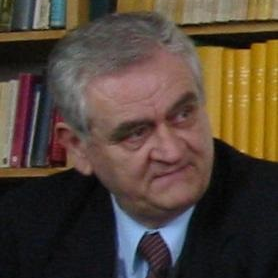Collection of Papers in Material Science from Romania
A special issue of Materials (ISSN 1996-1944).
Deadline for manuscript submissions: closed (30 November 2021) | Viewed by 17521
Special Issue Editor
2. Department of Materials Science, “Transylvania” University of Brasov, 500036 Brasov, Romania
Interests: nanomaterials; materials science; composites; ceramics; biomaterials; surface functionalization; testing and characterization of materials; noise and fluctuations applied on materials science; nanotechnologies in heat treatments
Special Issues, Collections and Topics in MDPI journals
Special Issue Information
Dear Colleagues,
I have the pleasure of inviting you to submit a manuscript for the forthcoming Special Issue “Collection of Papers in Material Science from Romania”, for the journal “Materials” ISSN 1996-1944.
Romania was one of the Neolithic and later antiquity centers recognized for its use of advanced technologies, in the processing of materials in general and iron in particular. We offer two examples: the first metalworking furnace, the Ghelar furnace, presented on a 1:1 scale at the British Museum and the fact that the construction materials used to build the Eiffel Tower were manufactured in Romania at Resita.
The subsequent as well as the present generations have attempted to continue this native talent of Romanians. This explains our initiative to publish, with the support of the prestigious journal "Materials", a Special Issue focused on some current research in the field of materials science. The theme included in these "pivotal" works was intentionally chosen to be diverse, in order to encourage those who join us to register with their own contributions without being bound by limiting topics.
Let us not forget, those of us who strive in the field of materials science, that there is no progress in human society that is not related to the evolution of materials (from stone and wood to crude iron, then to steels, then to special materials, ceramic matrices, biomaterials, nanomaterials, etc.). As a result, my invitation is to make as many proposals as possible to publish research topics that fall within the broader field of the testing and characterization of advanced materials.
Prof. Dr. Cornel Samoilǎ
Guest Editor
Manuscript Submission Information
Manuscripts should be submitted online at www.mdpi.com by registering and logging in to this website. Once you are registered, click here to go to the submission form. Manuscripts can be submitted until the deadline. All submissions that pass pre-check are peer-reviewed. Accepted papers will be published continuously in the journal (as soon as accepted) and will be listed together on the special issue website. Research articles, review articles as well as short communications are invited. For planned papers, a title and short abstract (about 100 words) can be sent to the Editorial Office for announcement on this website.
Submitted manuscripts should not have been published previously, nor be under consideration for publication elsewhere (except conference proceedings papers). All manuscripts are thoroughly refereed through a single-blind peer-review process. A guide for authors and other relevant information for submission of manuscripts is available on the Instructions for Authors page. Materials is an international peer-reviewed open access semimonthly journal published by MDPI.
Please visit the Instructions for Authors page before submitting a manuscript. The Article Processing Charge (APC) for publication in this open access journal is 2600 CHF (Swiss Francs). Submitted papers should be well formatted and use good English. Authors may use MDPI's English editing service prior to publication or during author revisions.
Keywords
- material science
- material testing
- material structures
- material characterization
- material properties
- applications of advanced materials
Benefits of Publishing in a Special Issue
- Ease of navigation: Grouping papers by topic helps scholars navigate broad scope journals more efficiently.
- Greater discoverability: Special Issues support the reach and impact of scientific research. Articles in Special Issues are more discoverable and cited more frequently.
- Expansion of research network: Special Issues facilitate connections among authors, fostering scientific collaborations.
- External promotion: Articles in Special Issues are often promoted through the journal's social media, increasing their visibility.
- e-Book format: Special Issues with more than 10 articles can be published as dedicated e-books, ensuring wide and rapid dissemination.
Further information on MDPI's Special Issue polices can be found here.






